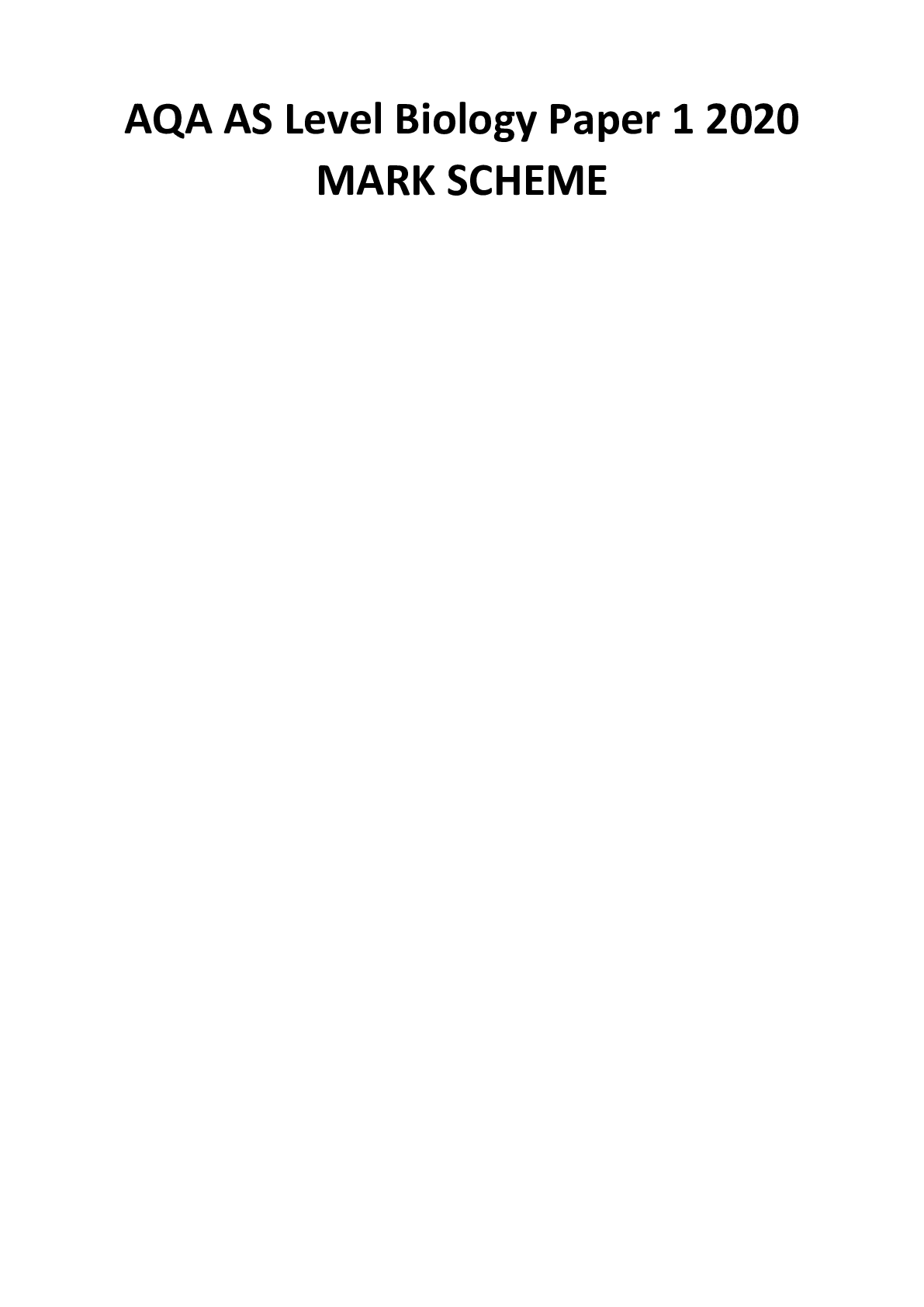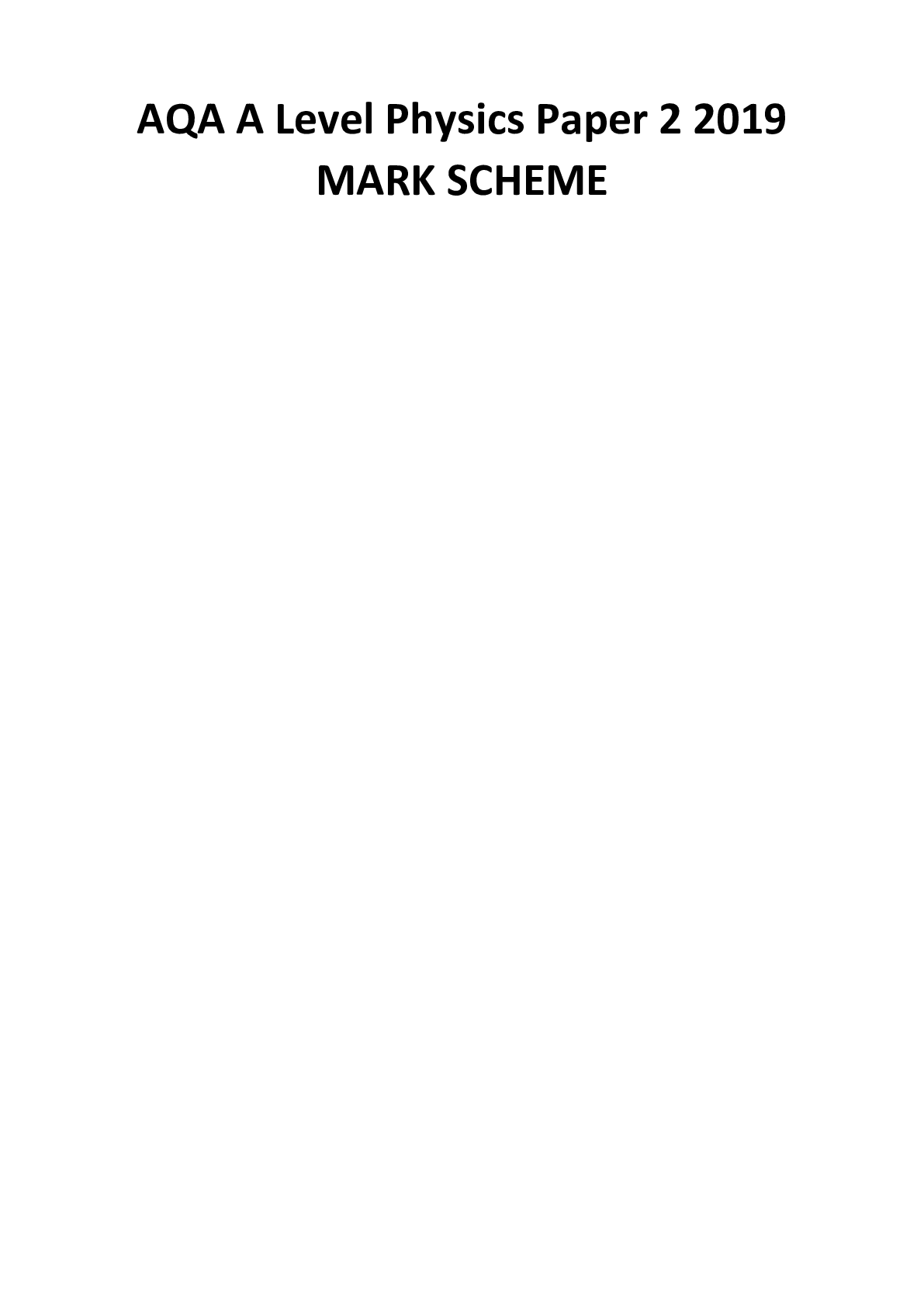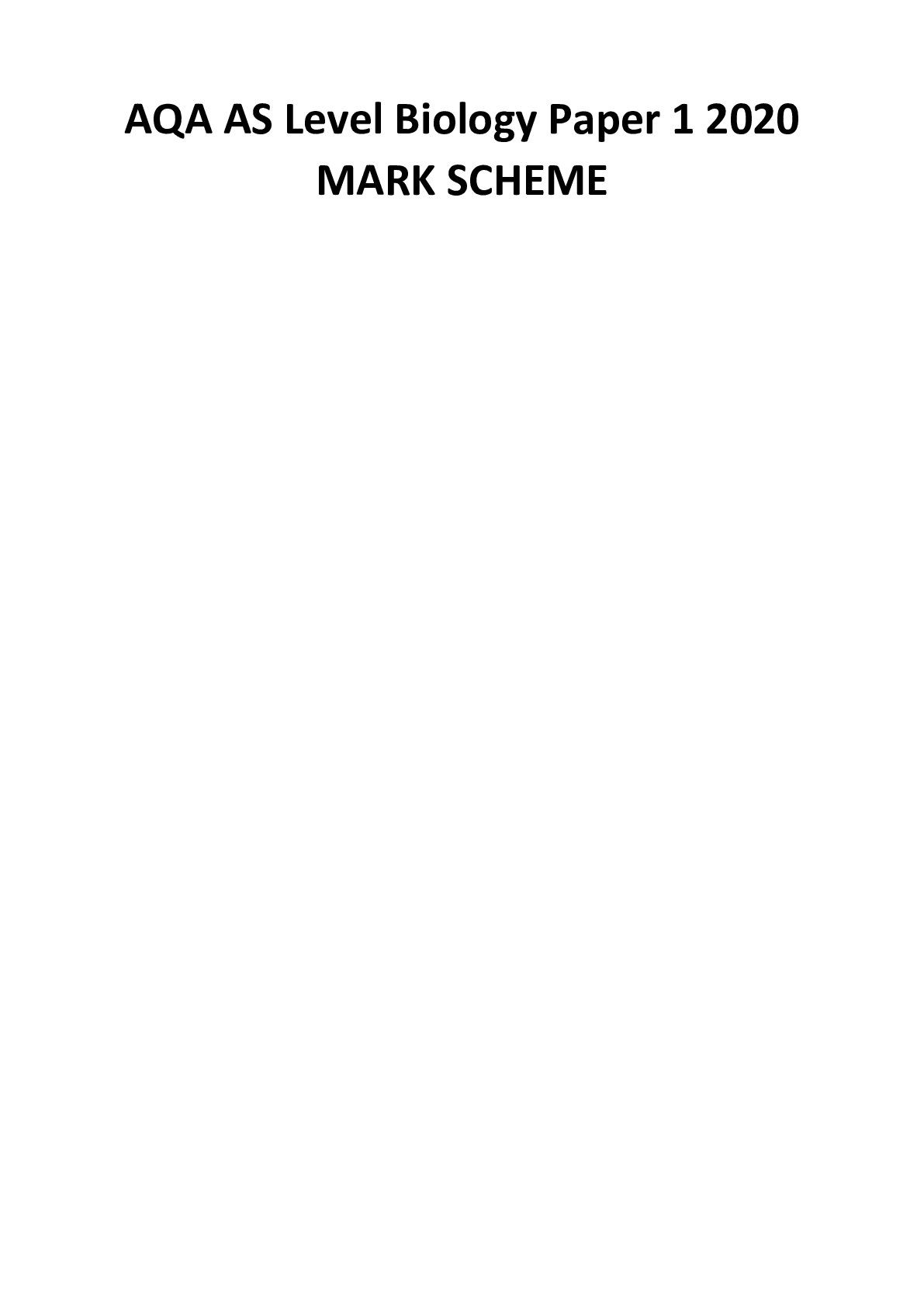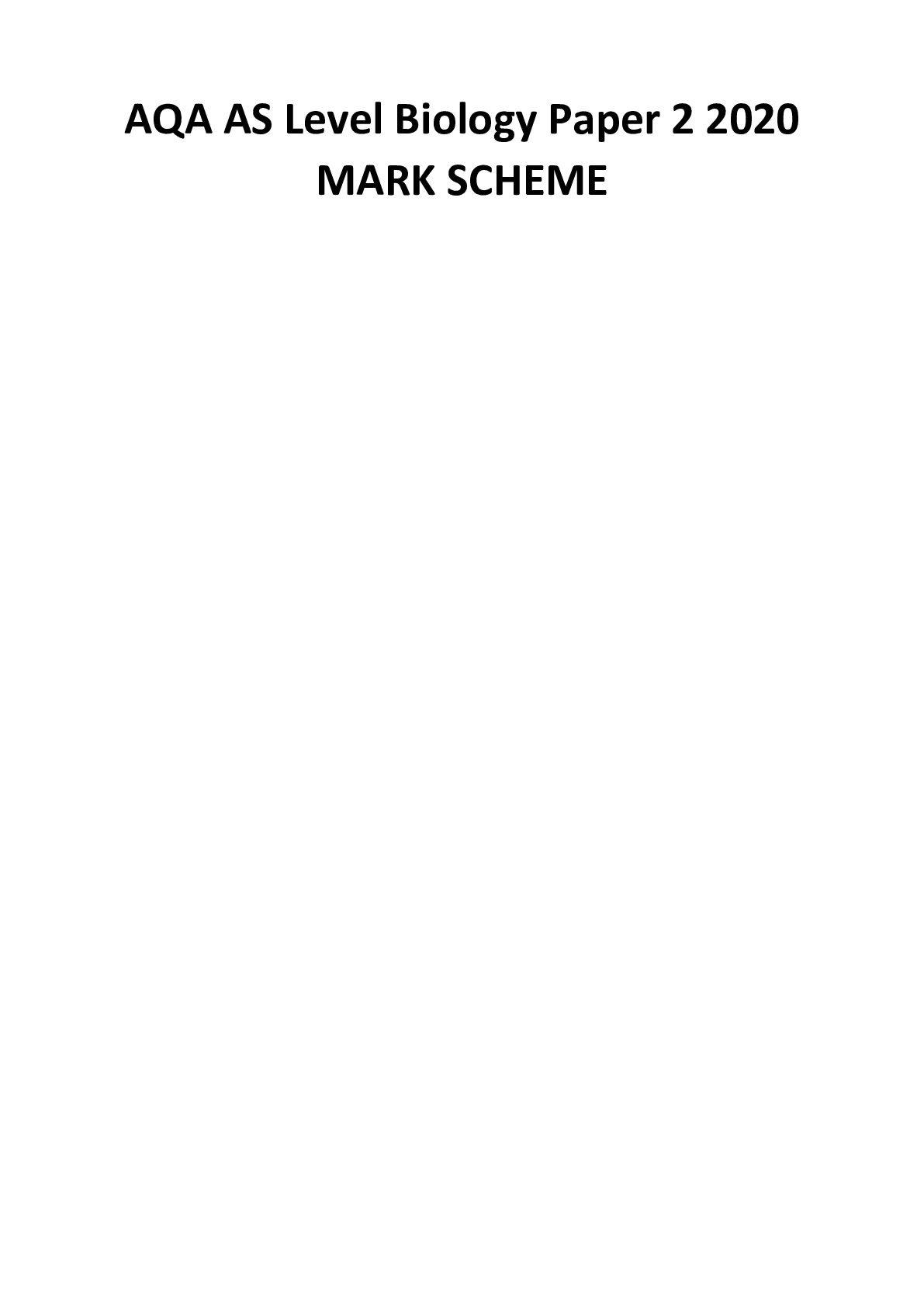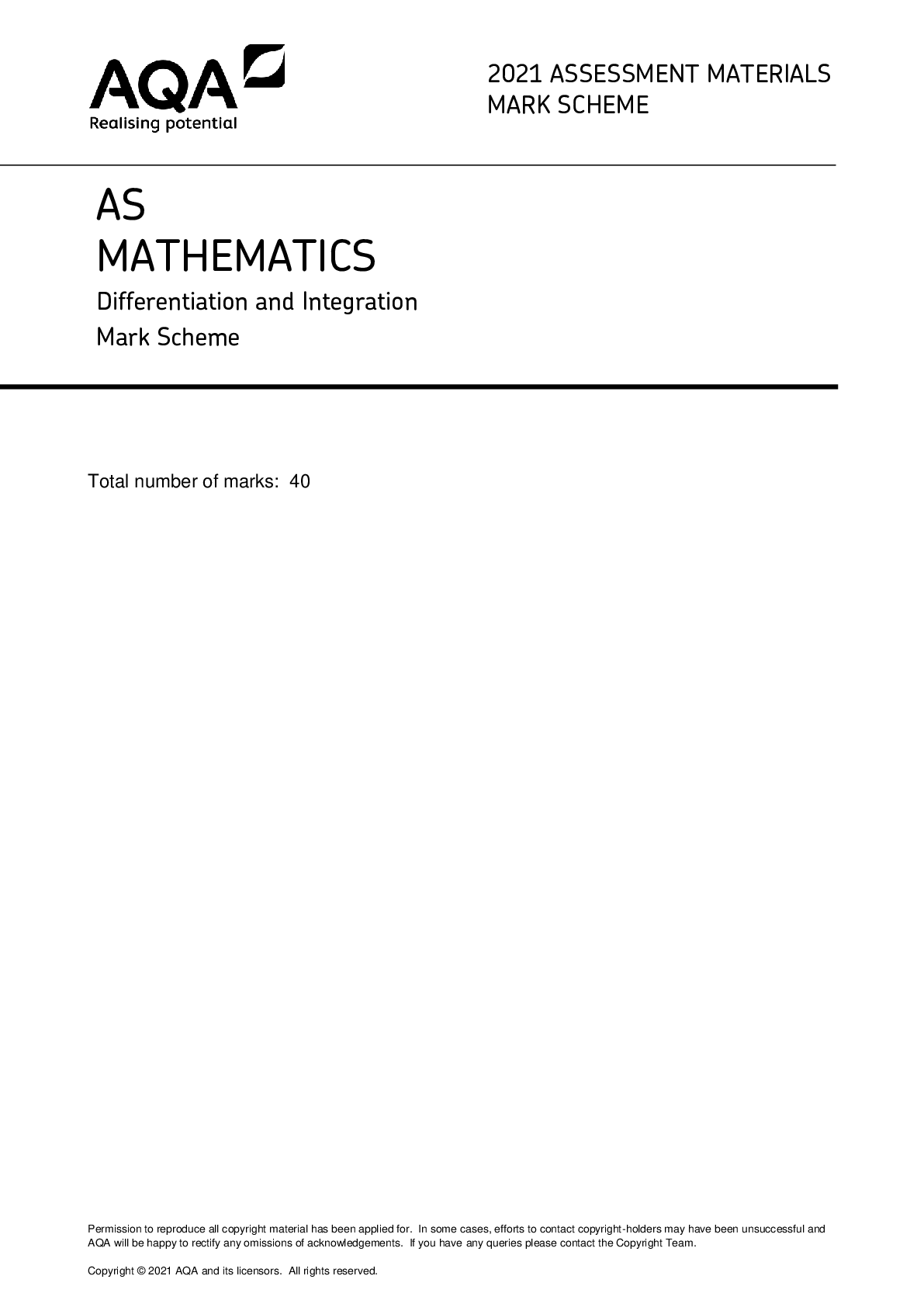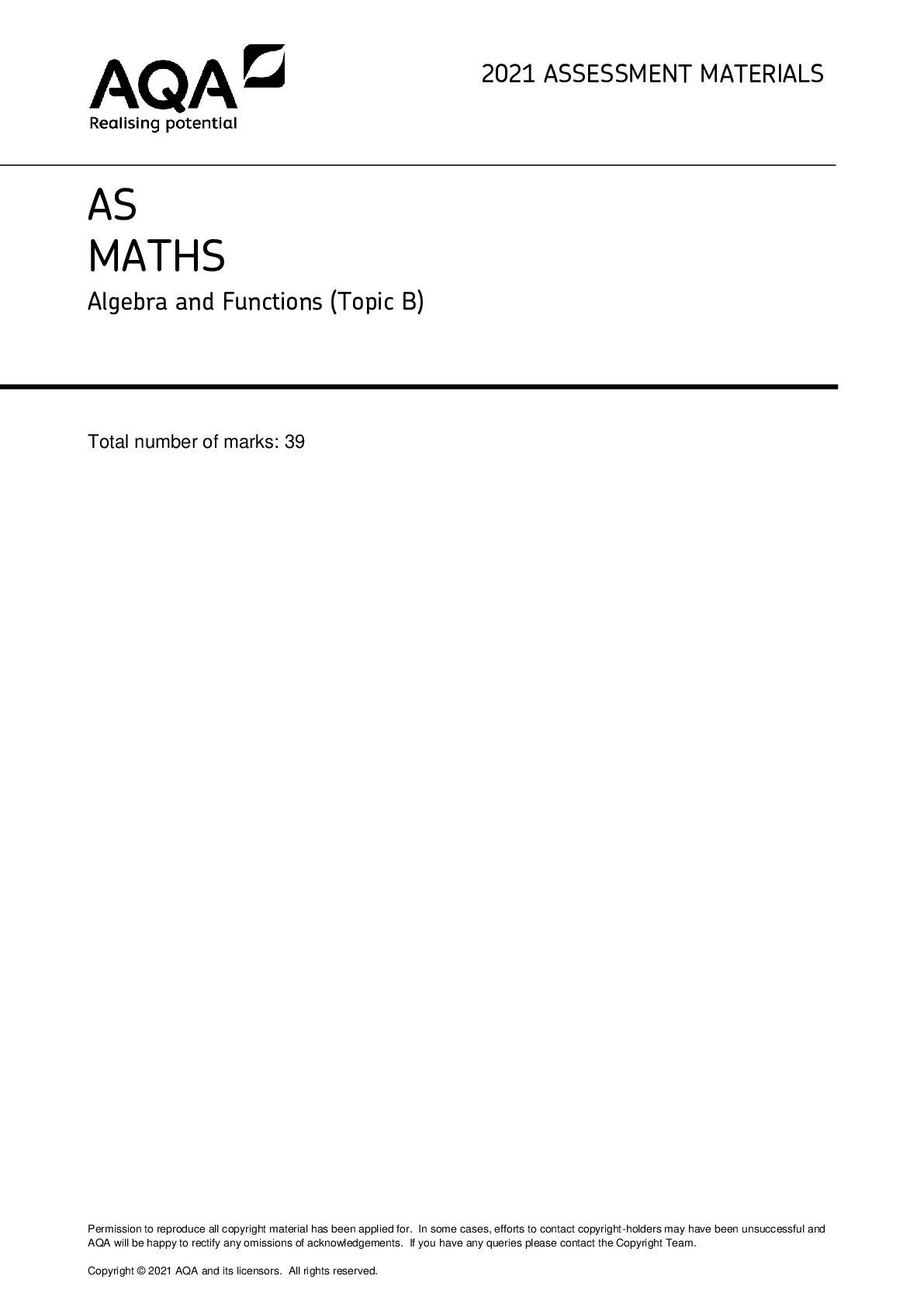Physics > AQA Questions and Marking Scheme > A-level PHYSICS 7408/2 Paper 2 Mark scheme June 2021 Version: 1.0 Final (All)
A-level PHYSICS 7408/2 Paper 2 Mark scheme June 2021 Version: 1.0 Final
Document Content and Description Below
A-level PHYSICS 7408/2 Paper 2 Mark scheme June 2021 Version: 1.0 Final Physics - Mark scheme instructions to examiners 1. General The mark scheme for each question shows: • the m... arks available for each part of the question • the total marks available for the question • the typical answer or answers which are expected • extra information to help the Examiner make his or her judgement and help to delineate what is acceptable or not worthy of credit or, in discursive answers, to give an overview of the area in which a mark or marks may be awarded. The extra information is aligned to the appropriate answer in the left-hand part of the mark scheme and should only be applied to that item in the mark scheme. At the beginning of a part of a question a reminder may be given, for example: where consequential marking needs to be considered in a calculation; or the answer may be on the diagram or at a different place on the script. In general the right-hand side of the mark scheme is there to provide those extra details which confuse the main part of the mark scheme yet may be helpful in ensuring that marking is straightforward and consistent. 2. Emboldening 2.1 In a list of acceptable answers where more than one mark is available ‘any two from’ is used, with the number of marks emboldened. Each of the following bullet points is a potential mark. 2.2 A bold and is used to indicate that both parts of the answer are required to award the mark. 2.3 Alternative answers acceptable for a mark are indicated by the use of or. Different terms in the mark scheme are shown by a / ; eg allow smooth / free movement. 3. Marking points 3.1 Marking of lists This applies to questions requiring a set number of responses, but for which candidates have provided extra responses. The general principle to be followed in such a situation is that ‘right + wrong = wrong’. Each error / contradiction negates each correct response. So, if the number of errors / contradictions equals or exceeds the number of marks available for the question, no marks can be awarded. However, responses considered to be neutral (often prefaced by ‘Ignore’ in the mark scheme) are not penalised. 3.2 Marking procedure for calculations Full marks can usually be given for a correct numerical answer without working shown unless the question states ‘Show your working’. However, if a correct numerical answer can be evaluated from MARK SCHEME – A-LEVEL PHYSICS – 7408/2 – JUNE 2021 Downloaded by: Nipsey | [email protected] Distribution of this document is illegal incorrect physics then working will be required. The mark scheme will indicate both this and the credit (if any) that can be allowed for the incorrect approach. 3 However, if the answer is incorrect, mark(s) can usually be gained by correct substitution / working and this is shown in the ‘extra information’ column or by each stage of a longer calculation. A calculation must be followed through to answer in decimal form. An answer in surd form is never acceptable for the final (evaluation) mark in a calculation and will therefore generally be denied one mark. 3.3 Interpretation of ‘it’ Answers using the word ‘it’ should be given credit only if it is clear that the ‘it’ refers to the correct subject. 3.4 Errors carried forward, consequential marking and arithmetic errors Allowances for errors carried forward are likely to be restricted to calculation questions and should be shown by the abbreviation ECF or conseq in the marking scheme. An arithmetic error should be penalised for one mark only unless otherwise amplified in the marking scheme. Arithmetic errors may arise from a slip in a calculation or from an incorrect transfer of a numerical value from data given in a question. 3.5 Phonetic spelling The phonetic spelling of correct scientific terminology should be credited (eg fizix) unless there is a possible confusion (eg defraction/refraction) with another technical term. 3.6 Brackets (…..) are used to indicate information which is not essential for the mark to be awarded but is included to help the examiner identify the sense of the answer required. 3.7 Ignore / Insufficient / Do not allow ‘Ignore’ or ‘insufficient’ is used when the information given is irrelevant to the question or not enough to gain the marking point. Any further correct amplification could gain the marking point. ‘Do not allow’ means that this is a wrong answer which, even if the correct answer is given, will still mean that the mark is not awarded. 3.8 Significant figure penalties Answers to questions in the practical sections (7407/2 – Section A and 7408/3A) should display an appropriate number of significant figures. For non-practical sections, an A-level paper may contain up to 2 marks (1 mark for AS) that are contingent on the candidate quoting the final answer in a calculation to a specified number of significant figures (sf). This will generally be assessed to be the number of sf of the datum with the least number of sf from which the answer is determined. The mark scheme will give the range of sf that are acceptable but this will normally be the sf of the datum (or this sf -1). [Show More]
Last updated: 1 year ago
Preview 1 out of 30 pages
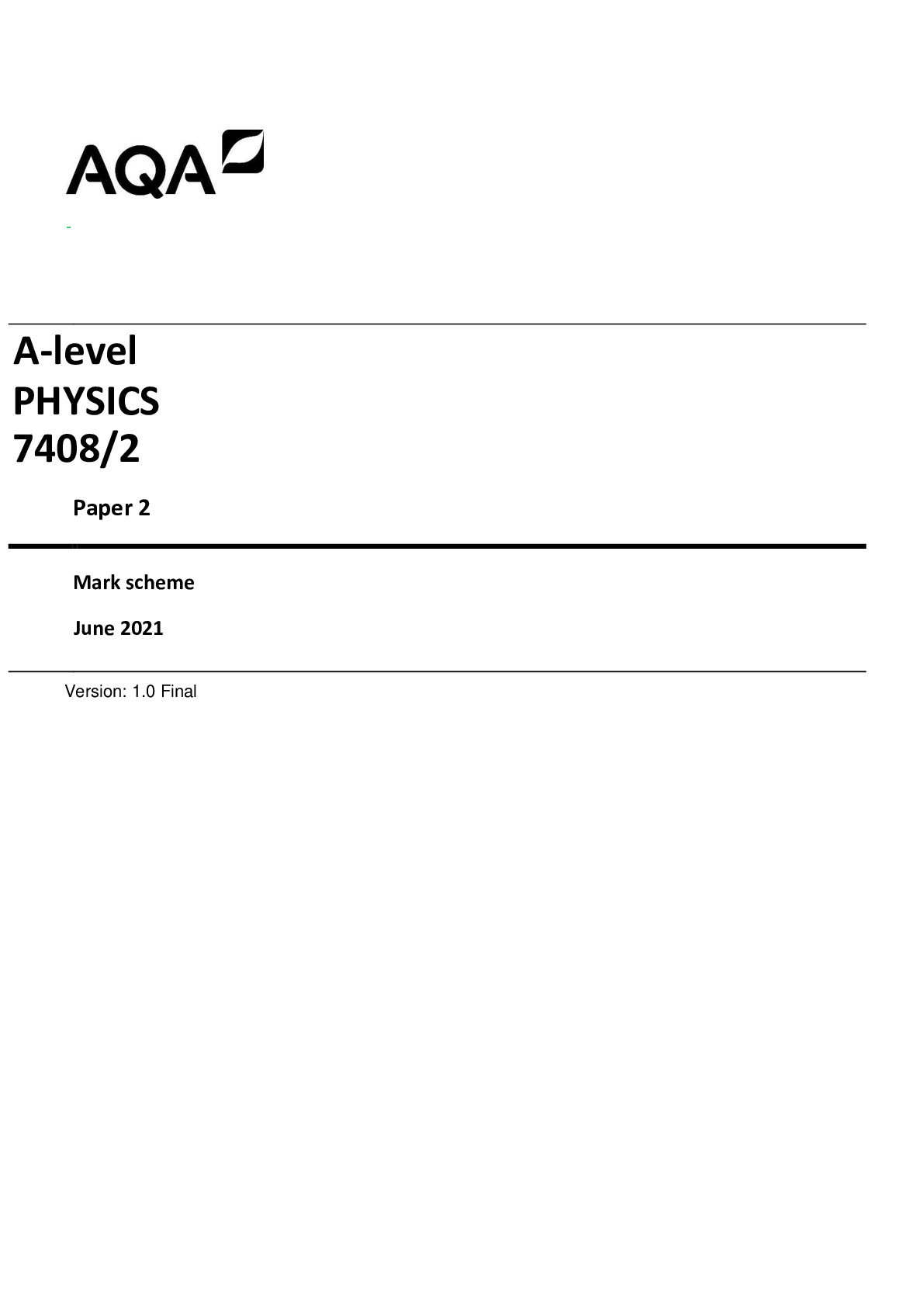
Reviews( 0 )
Document information
Connected school, study & course
About the document
Uploaded On
Apr 10, 2022
Number of pages
30
Written in
Additional information
This document has been written for:
Uploaded
Apr 10, 2022
Downloads
0
Views
64




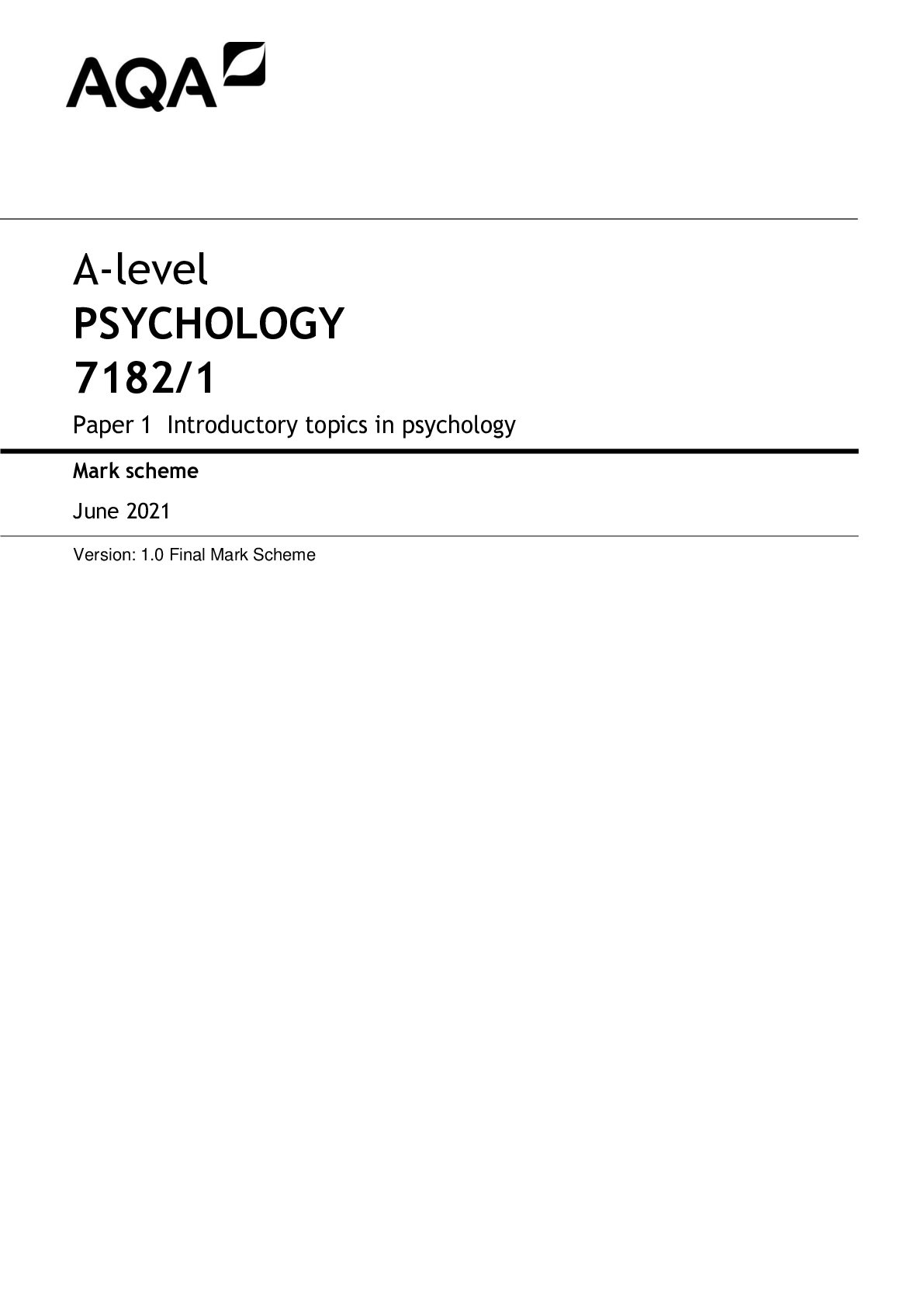
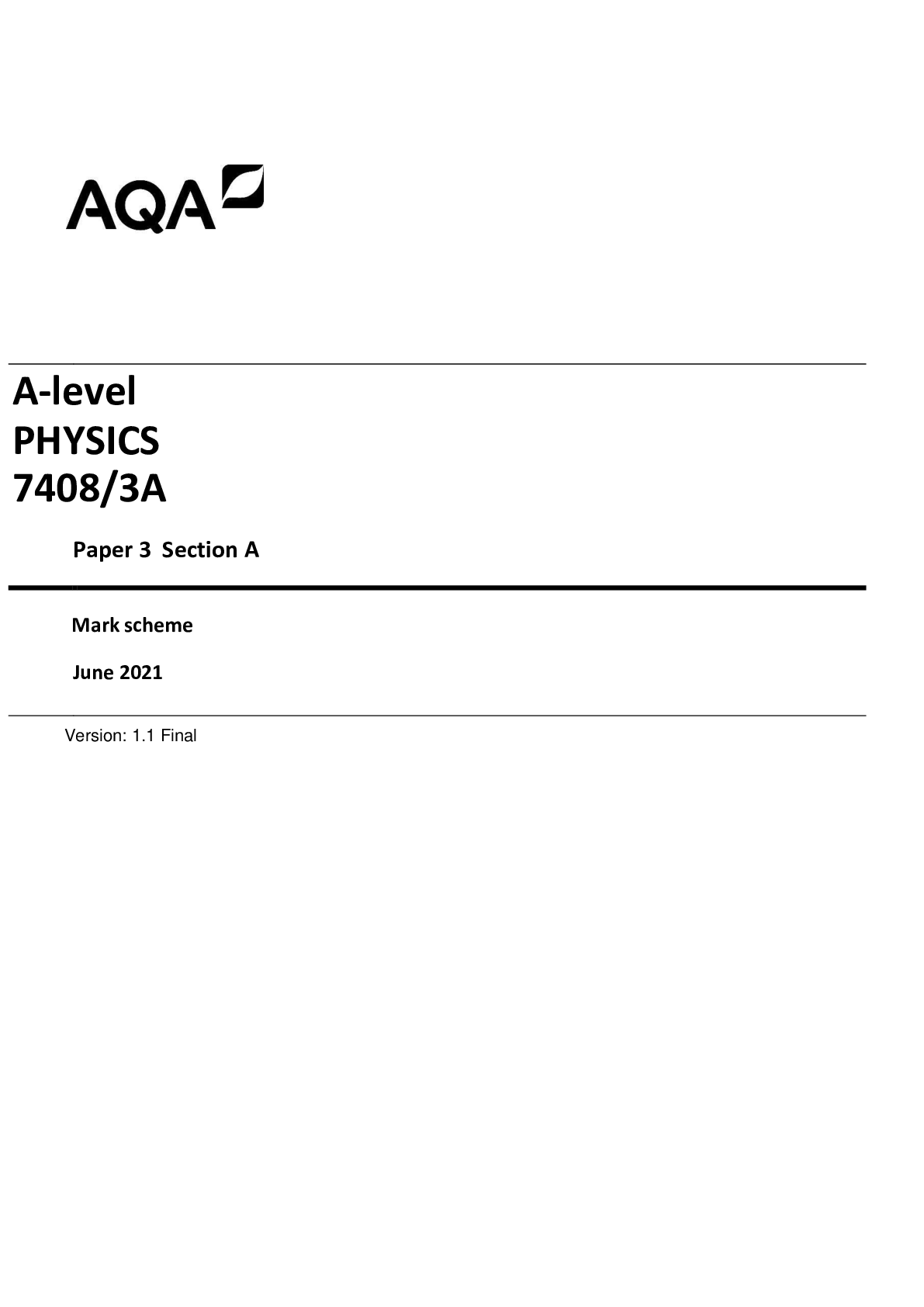
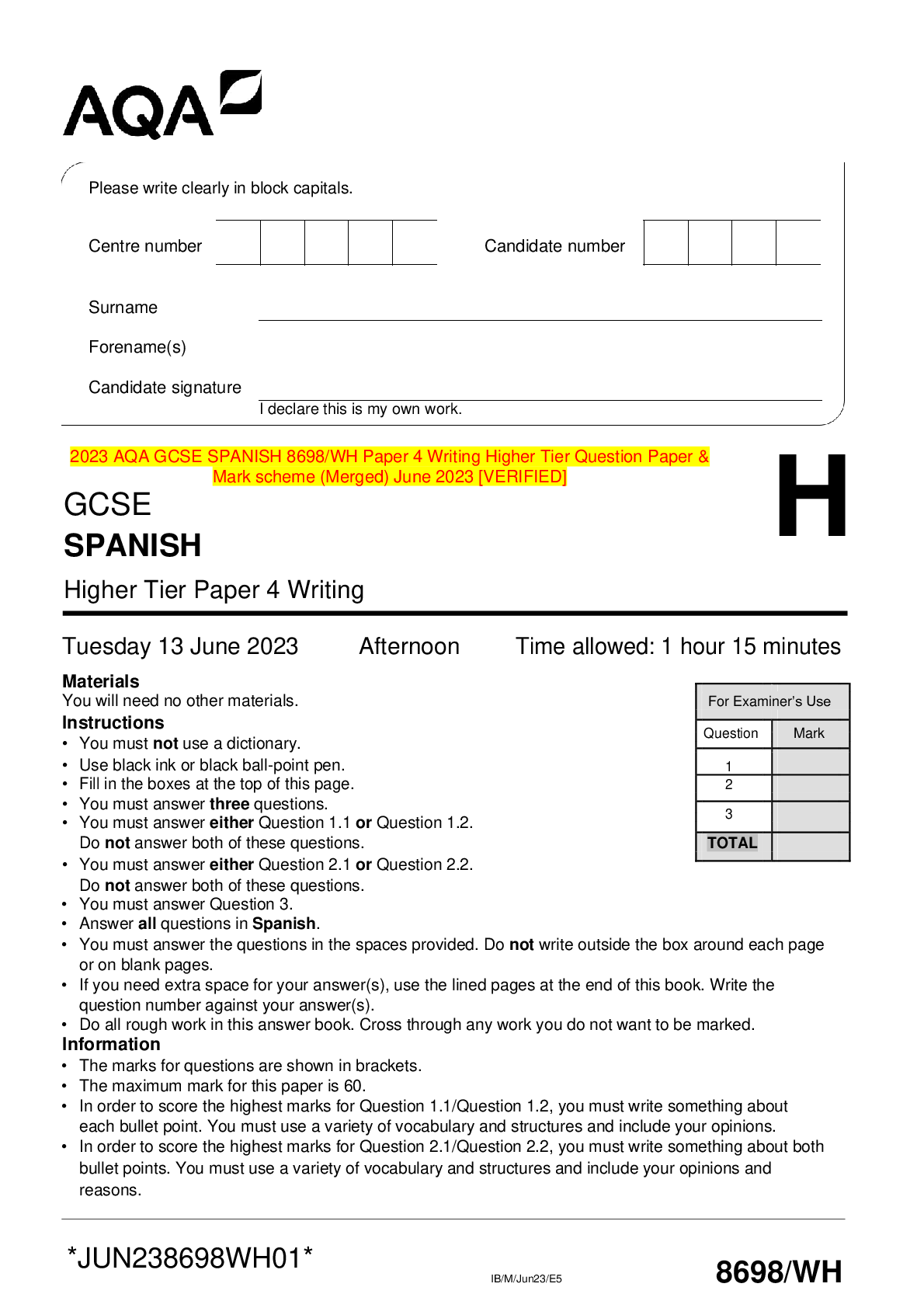
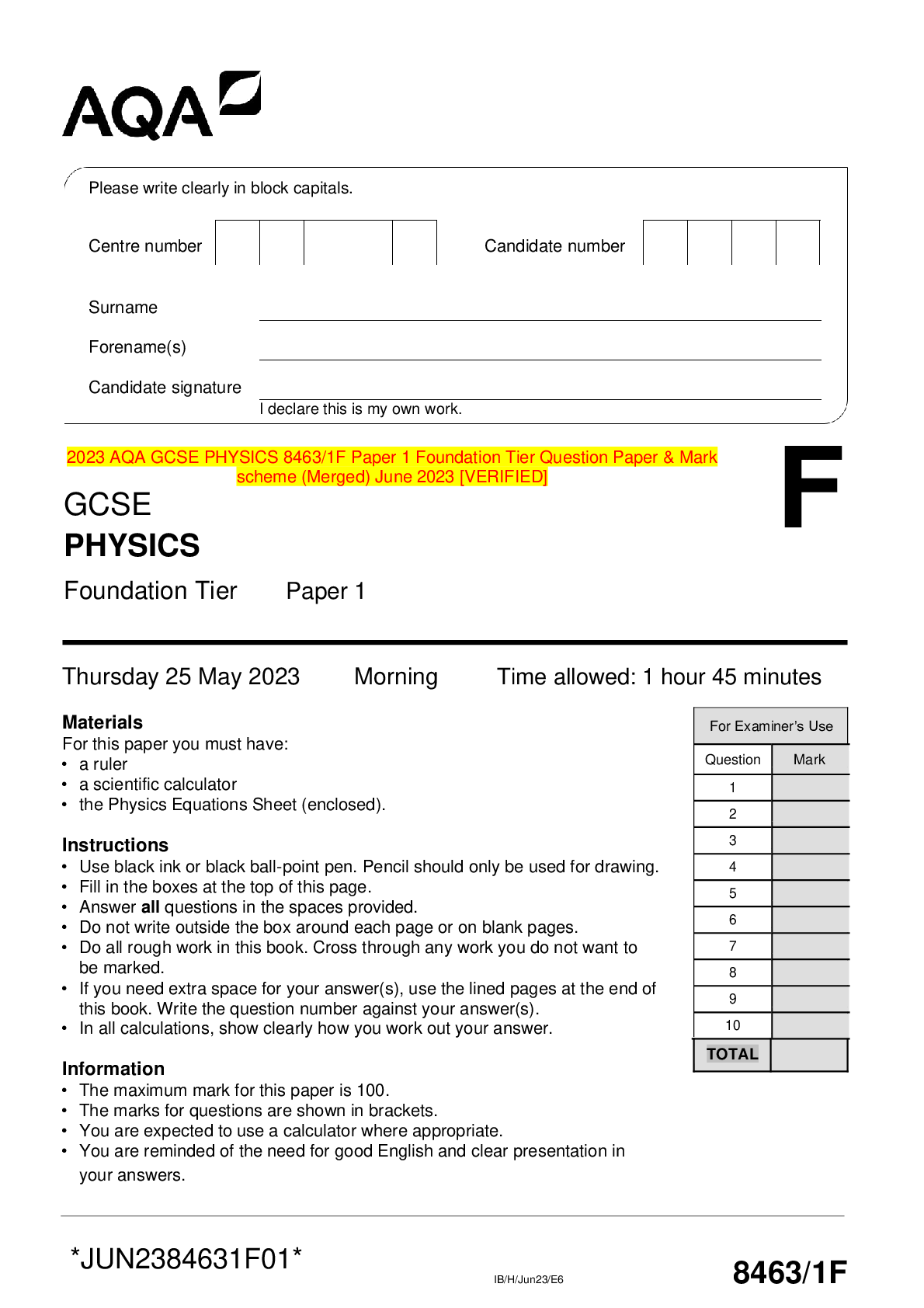
.png)
.png)
.png)
.png)
.png)
